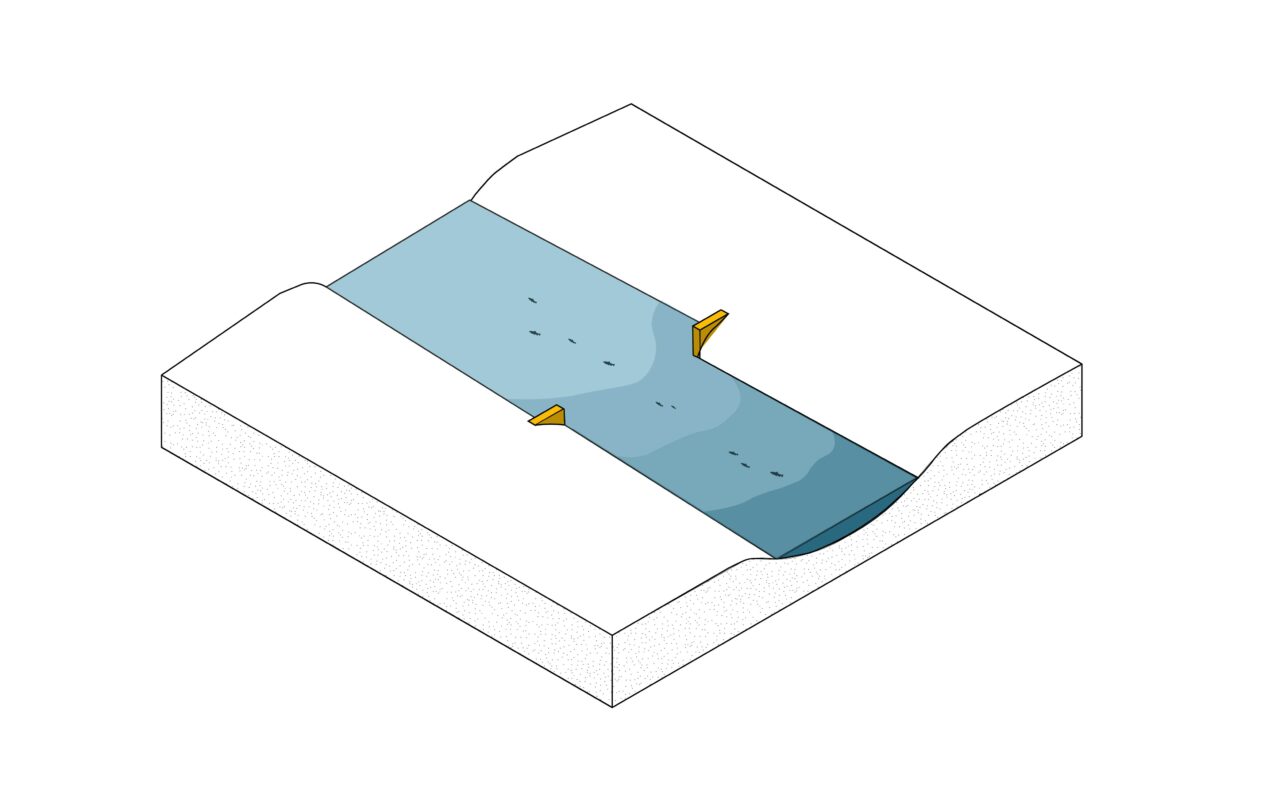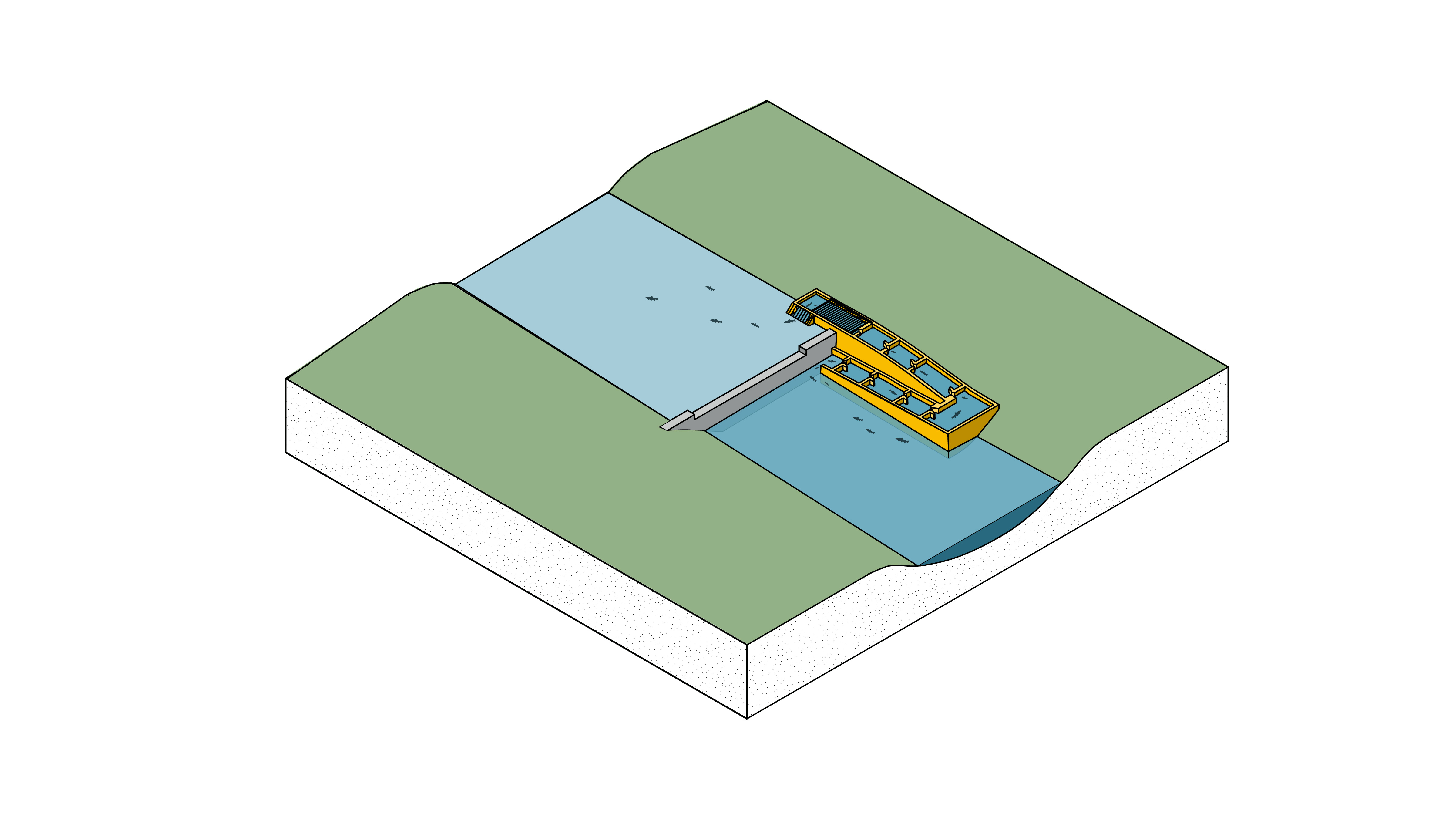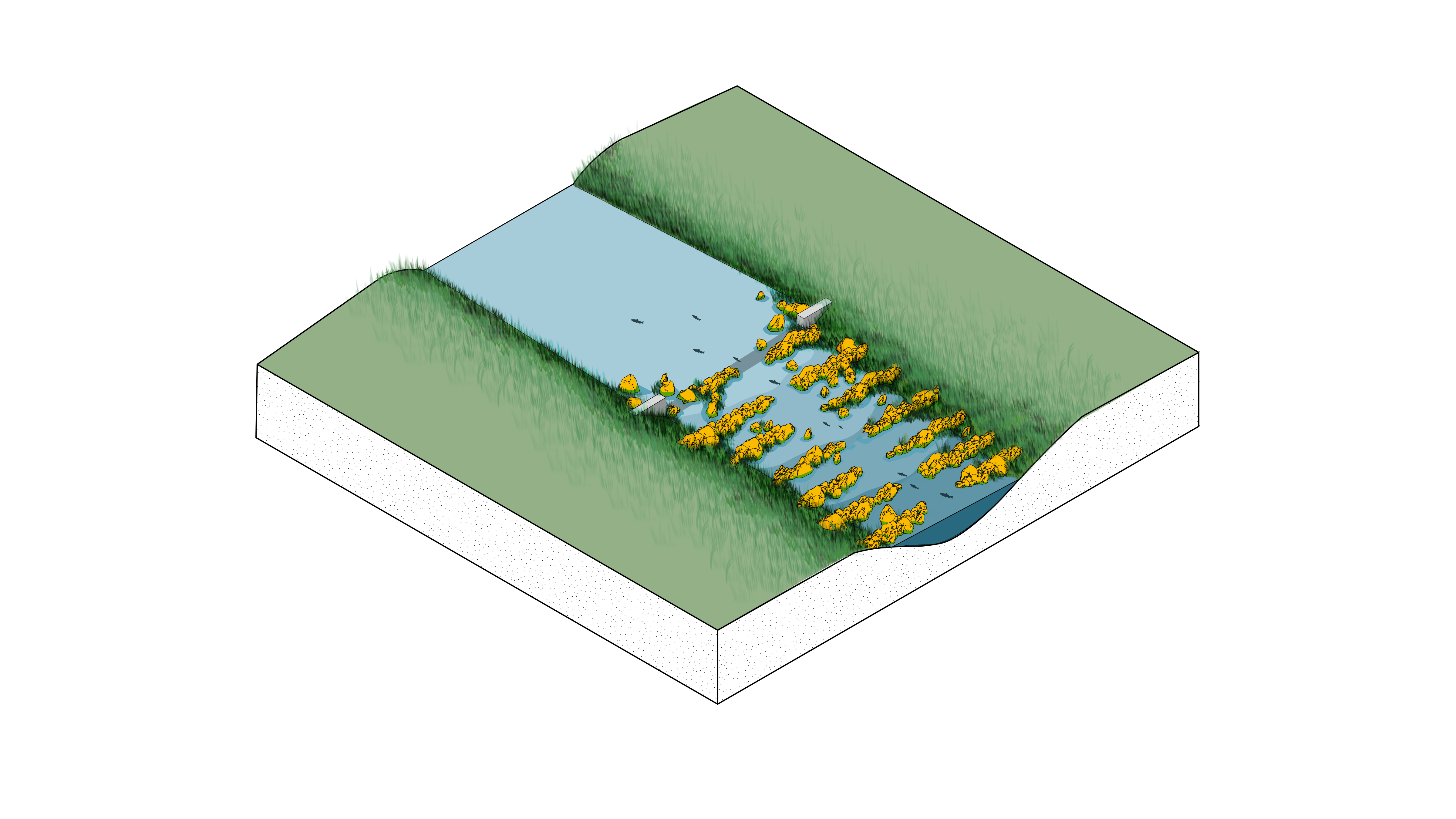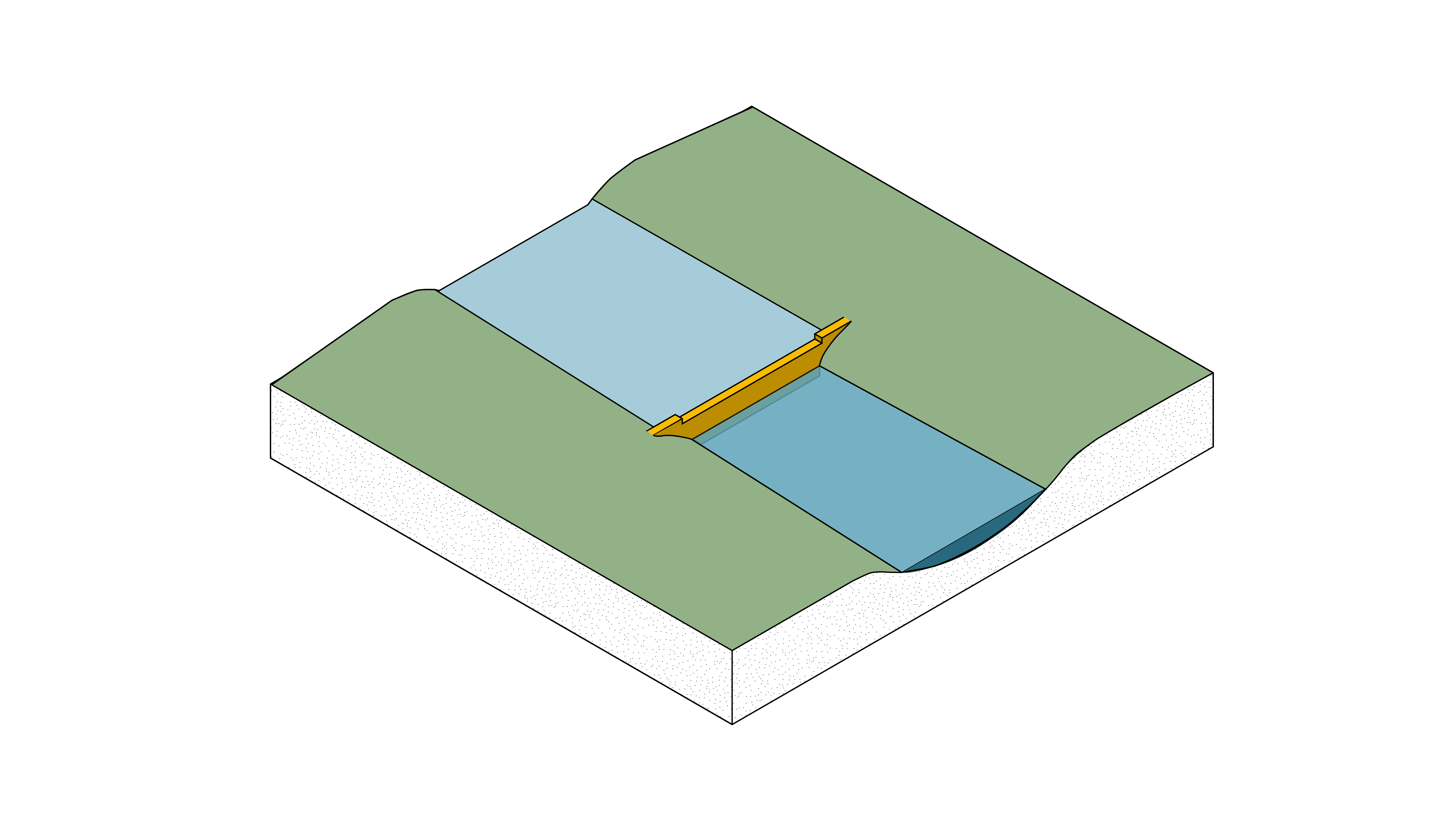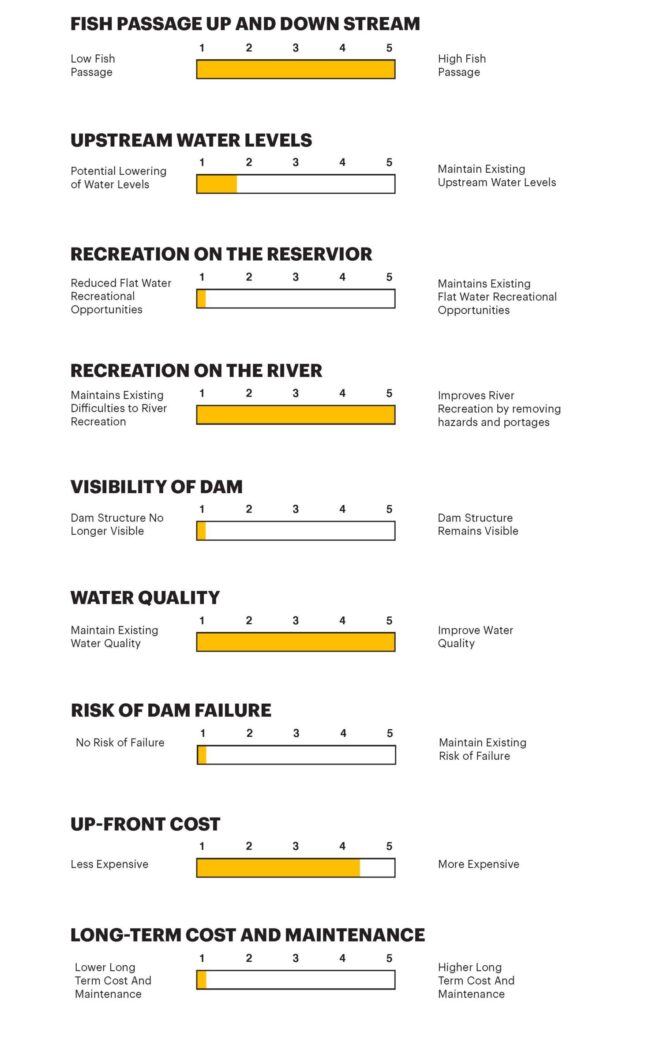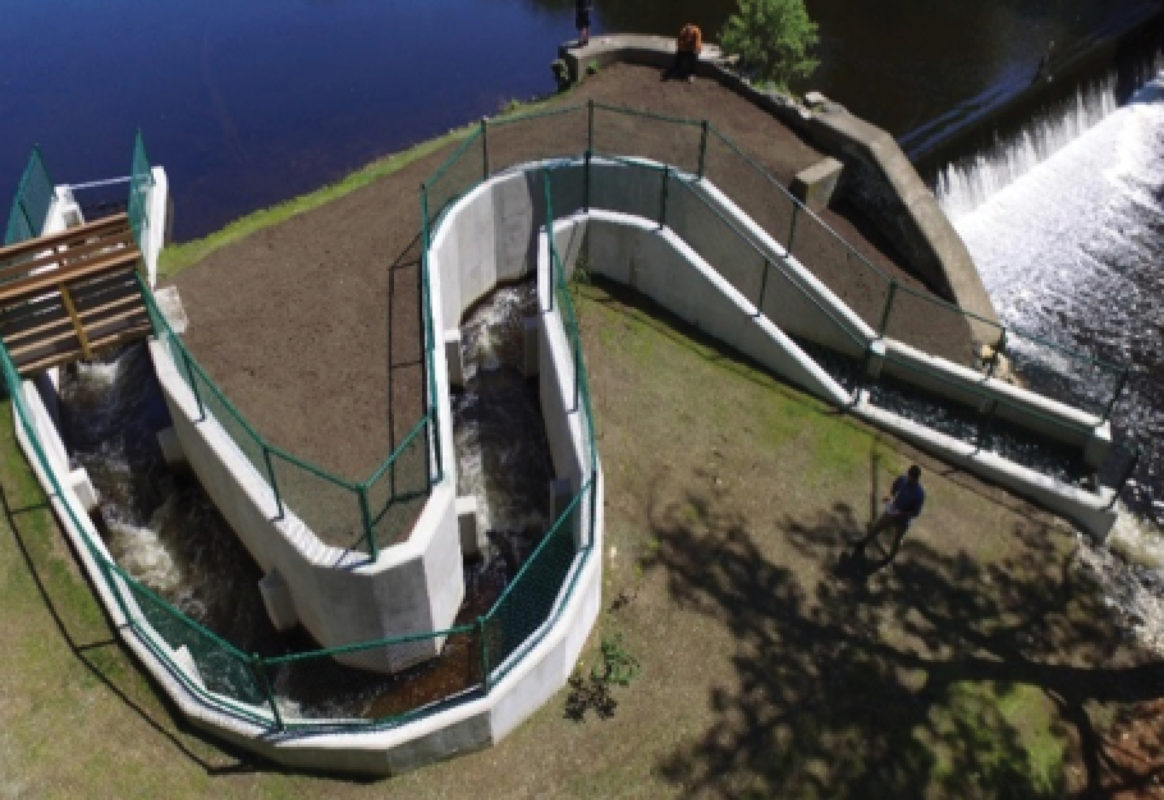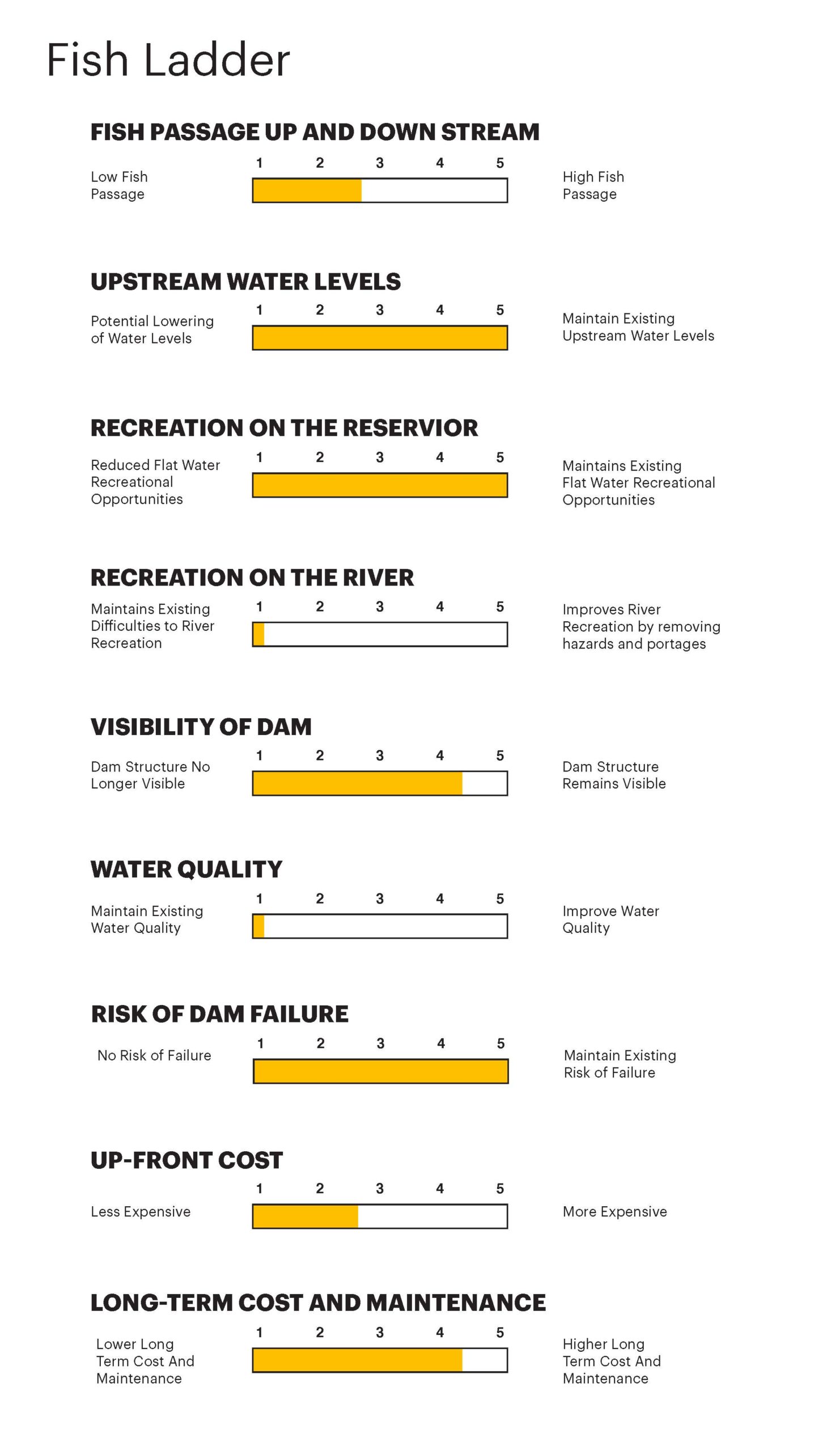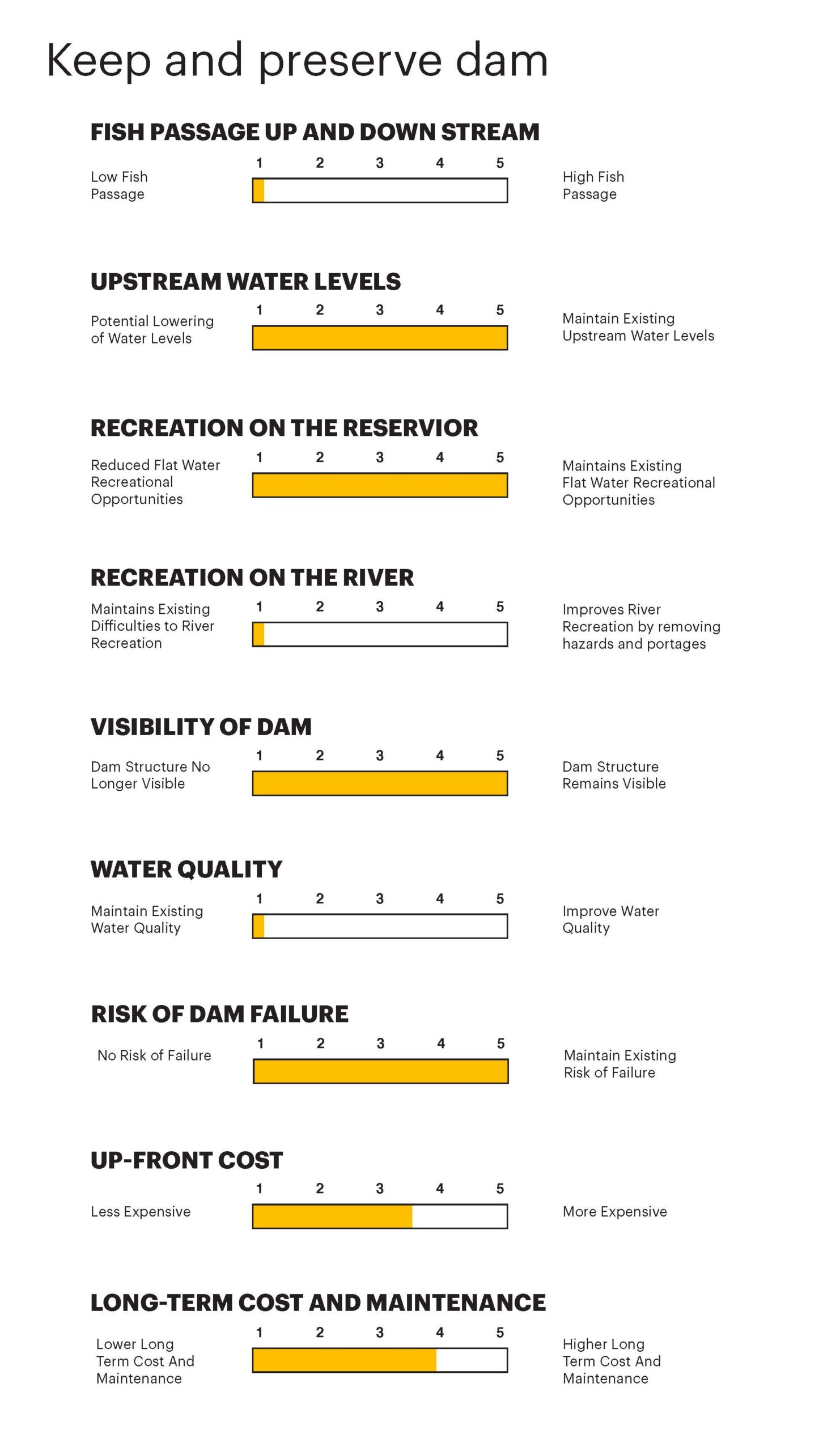Conventional Fishway
A conventional fishway, commonly nicknamed “fish ladder,” is a structure that is built alongside an existing dam that is intended to provide a corridor for aquatic species to swim up and over the dam barrier, then back down. Conventional fishways may be an option where there is a desire to provide some fish passage without removing the dam. Selecting the most appropriate conventional fishway for a given project will depend upon the slope, budget, flow conditions, and target species.
Those unfamiliar with fish ladders may be surprised at the complexities and challenges that must be overcome for these to function well with a variety of species (e.g., river herring, shad, eels) and life stages (juvenile vs. adult). The iconic image of salmon fighting through rapids and jumping over waterfalls does not capture the realities of most migrating fish. Fish vary dramatically in their swimming speed, stamina and leaping ability. The slope, turbulence, placement of resting areas and other design features are essential elements. Unfortunately, a “one-size-fits- all” approach with fishways rarely works. Some fish such as River herring are not capable of leaping over obstacles. American shad can surmount maximum velocities of a fish ladder that are 40% greater than what River herring (blue-back and alewifes) can handle and 8 fold greater than American eel.
A second complication concerns how to attract the migrating fish into a fish ladder. Fish seek particular velocities and pathways through a river channel as they move upstream. If the entrance placement and water flow out of a fish ladder does not match preferred conditions, migrating fish will not use the ladder and can mass in huge numbers at the base of a dam – negating the entire fish ladder. The design of fish ladders that will accommodate multiple fish species and life stages is not yet a mature science and many fish ladders require costly alterations after construction.
While a conventional fishway can provide some fish passage, they do little to address the other impacts of dams. In this scenario, the dam as well as the fish ladder will be visible. If a dam has received a letter of deficiency, the dam would need to be repaired prior to constructing the fishway. In addition to this upfront cost, this scenario requires long-term maintenance of the dam and the fishway. Conventional fishways vary in cost, aesthetics, and performance depending on the design and dam structure. They are not inexpensive and frequently cost upwards of half a million dollars.
There are 3 general types of conventional fishways found within Narragansett Bay Watershed:
Denil fishway – Denil Fishways are typically designed as a switchback with a series of baffles (notched boards) followed by pools to reduce water velocity and provide fish resting areas. The fish swim up each successive baffle to gain height and rest in the plunge pools along the way to conserve energy. The entrance needs a strong flow to attract the fish species to use the ladder.
Alaskan steeppass fishway – The Alaskan steeppass is a prefabricated, modular style of Denil fishway made of aluminum alloy. They are inexpensive to construct and maintain, effective with steep slopes, and easily retrofitted to address fishways that are not working. However, Alaskan steeppass fishways only work with dams that have a minimal drainage area and relatively stable flows.
Weir and Pool fishways – This fishway consists of a narrow artificial channel with an entrance along the river’s edge. It is a series of small overflow weirs (low dams) and pools of regular length. The pools are constructed in the form of steps and these pools are divided by overflow weirs. Fish need to jump from one pool to another to migrate upstream, which can be a challenge for some species. Pool and weir fishways are suitable for many situations, however, they require a large space to construct.
